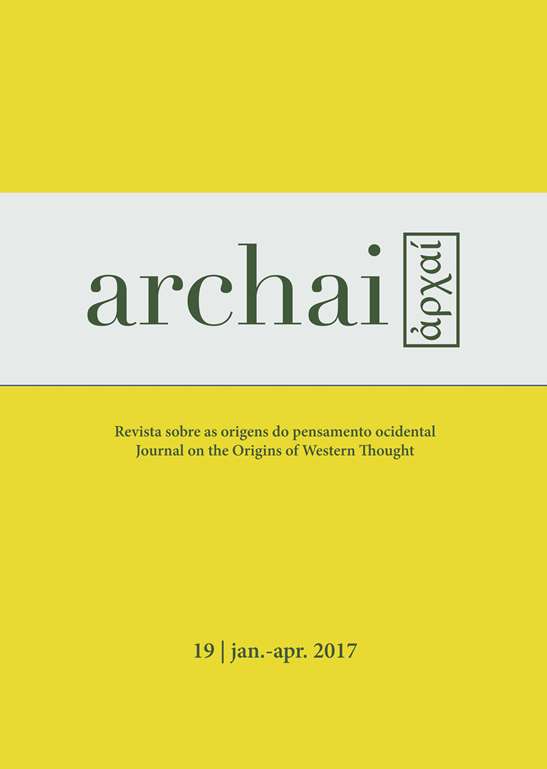The intermediate character of mathematics and the ontological structure of its elements by Plato and Aristotle
DOI:
https://doi.org/10.14195/1984-249X_19_5Keywords:
Plato, Aristotle, MathematicsAbstract
This article examines the ontological structure of mathematical “objects”, focusing on the opposing views of books VI-VII of Plato’s Republic and books XIII-XIV of Aristotle’s Metaphysics. Plato understands Mathematics as a means or a path (method) of obtaining a philosophical education, and considers the “subject” of Mathematics as ὑποθÎσει, rather than οá½ÏƒÎ¯Î±Î¹ (separate entities). In agreement with Plato, Aristotle seeks to describe the ontological structure of mathematical “objects” not as οá½ÏƒÎ¯Î±Î¹, but as quantity, quality or relation; which is to say, as the separable elemental properties (στοιχηῖαι) of entities. I will argue that while neither Plato nor Aristotle understood the objects of Mathematics as separated entities, Aristotle’s description is more effective by virtue of its consideration of an “object’s” separable elemental properties as the “subject” of mathematics.
Downloads
Downloads
Published
How to Cite
Issue
Section
License
Given the public access policy of the journal, the use of the published texts is free, with the obligation of recognizing the original authorship and the first publication in this journal. The authors of the published contributions are entirely and exclusively responsible for their contents.
1. The authors authorize the publication of the article in this journal.
2. The authors guarantee that the contribution is original, and take full responsibility for its content in case of impugnation by third parties.
3. The authors guarantee that the contribution is not under evaluation in another journal.
4. The authors keep the copyright and convey to the journal the right of first publication, the work being licensed under a Creative Commons Attribution License-BY.
5. The authors are allowed and stimulated to publicize and distribute their work on-line after the publication in the journal.
6. The authors of the approved works authorize the journal to distribute their content, after publication, for reproduction in content indexes, virtual libraries and similars.
7. The editors reserve the right to make adjustments to the text and to adequate the article to the editorial rules of the journal.



